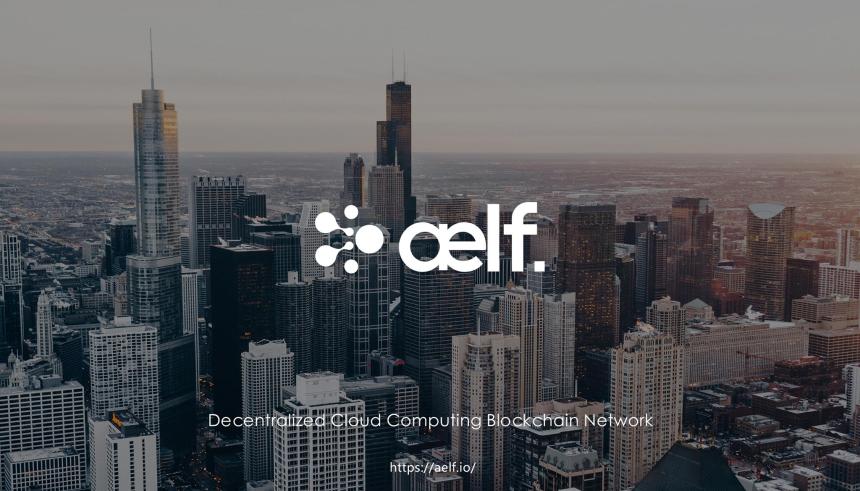Reason to trust

How Our News is Made
Strict editorial policy that focuses on accuracy, relevance, and impartiality
Ad discliamer
Morbi pretium leo et nisl aliquam mollis. Quisque arcu lorem, ultricies quis pellentesque nec, ullamcorper eu odio.
We had the fortunate opportunity to sit down with Zhuling Chen, COO of AELF, a third-generation cloud computing platform. AELF’s approach to solving the scalability trilemma (the trade-off between security, speed, and decentralization) is using a mainchain and sidechain architecture. The project positions itself as a highly customizable blockchain platform with a focus on enterprise adoption.
In this interview, we explore the reasoning behind AELF’s design and examine their plan to take on the decentralized computing marketplace.
There are over 40 smart contract platforms vying to become the operating systems of Cloud 3.0. How many do you think we need? How many will be around in 5 years?
I would guess 5-10 will become noticeable in the next five years. Blockchain is global, but each bring different features. Each business needs to become educated on what suits them the best.
AELF employs a mainchain based on dPoS and sidechains with customizable consensus, allowing businesses to tailor these sidechains to their specific use cases. Why use dPoS for the mainchain?
The mainchain does not execute any smart contracts—the main chain acts as an observer of all the transactions happening on sidechains. Smart contracts will only be carried out on sidechains.
Why dPoS? We investigated many market alternatives but we think dPoS is both scalable and efficient. If you look at Bitcoin, we believe it is somewhat headed towards a delegated PoW model if you consider how mining pools work.
Why use sidechains?
We believe resource segregation is required among the system. Thousands of smart contracts will be hosted on the blockchain network, so how is it feasible to host everything on one simple blockchain?
A developer needs to hope that other dApps are not popular during the same time as theirs, since resources are not dedicated. Sidechains enable horizontal scalability and allow each smart contract to have their own customized solution.
Multiple lanes on a highway is better than one—some lanes should contain motorbikes, and others should contain trucks. In relation to AELF, this means that certain sidechains will be used for banking, while others for gaming, etc.
The AELF whitepaper is critical of existing “one chain fits all” blockchain designs. What do you mean by this?
First, if you have thousands of smart contracts on one chain, the whole database will be quite messy. Second, this does not allow you to have your own dedicated computational resources. And third, this does not allow you to customize your own environment. If you build one chain which is great at everything, you are building an empire, but you are also limiting yourself to the architecture of one structure. With the AELF system, we can work on the scalability of one chain, but also expand using additional chains.
Let’s play devil’s advocate. Does AELF’s emphasis on customizability swing the pendulum too far and spread the platform thin?
I actually believe the opposite. I think every business has their own preference and providing a certain level of customization actually makes it easier for people to embrace it. For large corporations, if they prefer to use a private chain setup, they can do that and still be connected to our ecosystem. And if startups think public chains are the way to go, they can do that as well. People can focus on what they are good at.
Another analogy: think about LINUX, an open source project that allows for customizability. Customizability is one of the success factors. But this customizability is not the core value proposition of AELF—our key innovation is that instead of building a “world computer”, we are building a “world cloud computer”, which we see as the natural evolution of computing. What happens underneath, our dedicated nodes run on a group of computers—they are organized in such a way that they take different transactions in parallel. This makes processing much faster, and allows us to execute more complicated smart contracts.
In your whitepaper, you argue that we need customizable sidechains because different use cases have different requirements. Case in point, ticket issuance requires high throughput, but does not need the same level of security as a high-value legal contract. Do you think these tradeoffs will always exist?
I think for distributed systems there are always tradeoffs between efficiency, security and decentralization. But I do not think there are any golden rules about what the best consensus is for now. That is why we allow for this level of customization. Using PoW makes sense if your goal is to create a store of value. But in other business cases, you do not need the same level of decentralization. How much value does your information actually hold? For me, blockchain is the Internet of Value, and we need to assess the value in each case.
What do you think of the scalability trilemma? Where does AELF fit into the picture?
Clearly there is a scalability trilemma, and that is why we believe there are certain situations where a decentralized blockchain works better, and others where a more centralized blockchain or database is better. We have to recognize that to have higher security, we have to sacrifice some efficiency.
That is why I like to separate data that is purely informative and data that holds a lot of value. If the data has a lot of value and impacts many stakeholders, decentralization works better. If it is purely informational, a centralized system might work better.
New platforms like Dfinity claim to solve the trilemma entirely, building a blockchain that is fast, secure, and decentralized. Do you think this is possible?
It is possible depending on how they define “fast”. If they really believe they can be as fast as a centralized system, I would really challenge that notion. Perhaps my perception is limited based on what I know—I don’t know what I don’t know. This is an exciting period, and for me this is kind of like the Roman period before Christianity, when they tolerated hundreds of different religions.
In one sentence, what is AELF’s go-to market strategy?
I need two. In terms of community, the go-to-market strategy is using a global, transparent, and interactive approach. In terms of future business—dApps—it is about capital, business model, and technical platform.
How do you think smart contract platforms will evolve over the next 5 years?
What I am starting to see is people breaking down the whole blockchain system into different parts, and within each part, people are working on different scalability projects. Some are working on the P2P layer, some on consensus, and others on smart contract execution. That kind of focus is very healthy for the whole ecosystem, and I think in the very near future we will start to see more and more projects working together. If they have a governance model like ours—where we allow the community to update the protocol—they can bring this all together. This is why we embrace a democratic way of decision making.
Why AELF?
Number one, we have equipped the AELF ecosystem in a way that allows different technologies to co-exist—public or private chains, together. We are the first to allow nodes to run on a cluster of computers to execute the more complicated smart contracts coming in the future. We have a governance model that allows us to utilize new technology, making AELF a self-evolving platform adapting to future demands and advancements.
Disclaimer: The opinions expressed in this article do not represent the views of NewsBTC or any of its team members. NewsBTC is neither responsible nor liable for the accuracy of any of the information supplied in Sponsored Stories/Press Releases such as this one.



























